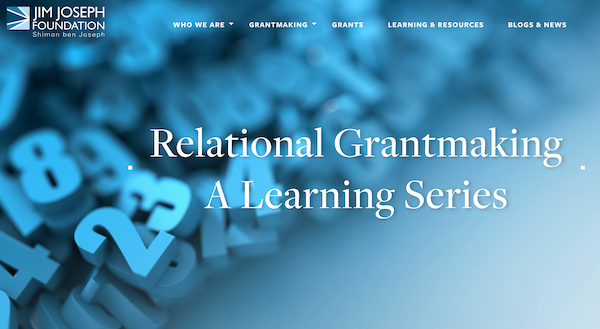Hiding Your Diversity Data Helps Keep #PhilanthropySoWhite
Orson Aguilar is president of The Greenlining Institute.
At this point, it’s no secret: Philanthropy needs to diversify. Diversity, or the lack thereof, has become something of a hot-button issue in recent years. We’ve seen dozens of articles urging foundations to make changes, including a 2016 op-ed co-written by Dr. Robert Ross, Luz Vega-Marquis, and Stephen Heintz entitled, Philanthropic Leadership Shouldn’t Look Like the Country Club Set.
And a handful of foundations have demonstrated what is possible when they make diversity, equity, and inclusion organizational priorities. The California Endowment (TCE), one of the pioneers in these efforts, adopted a 15-part Diversity Plan in 2008, and since that year, TCE has published four “Diversity, Equity, and Inclusion Audits” to track its own progress. The audit is simple and profound, stating: “By openly reflecting on our progress and challenges related to diversity, equity and inclusion, we hope that the audit fosters a broader culture of continuous improvement where we challenge ourselves to always do better and to advance -- for the field, for our staff, and for the communities we ultimately serve.”
And yet, despite this heightened awareness and the concerted efforts of a handful of organizations, diversity and equity in philanthropy as a whole haven’t changed much. The data published by the D5 Coalition suggest that we have seen virtually no increase in the number of people of color who hold staff and leadership positions at foundations, and little increase in the representation of women.
“Making philanthropy more diverse and inclusive should be a top priority for everyone.”
More frustrating is the fact that very few foundations have decided to voluntarily disclose their demographic data since the attempted passage of California’s A.B. 624, proposed legislation that would have required large foundations in the state to collect and disclose demographic data for themselves and for their grantees.
According to a search on Glasspockets.org, only 10 of the more than 90 foundations publicly committing to working more openly have disclosed both their diversity data and their diversity values policies. The list of 10 foundations includes foundations such as The David and Lucile Packard Foundation, The Rockefeller Foundation, Annenberg Foundation, and Silicon Valley Community Foundation. They should be applauded. Interestingly, more than 40 foundations have stated that they have diversity/values policies, yet most of them fail to disclose their own diversity data.
Making philanthropy more diverse and inclusive should be a top priority for everyone, regardless of whether or not your foundation focuses on supporting communities of color. This isn’t just a numbers game. As Ruth McCambridge reminds us in her recent article for Nonprofit Quarterly, “Lack of racial, ethnic, and gender diversity in philanthropy enlarges the understanding gap between philanthropy and the communities meant to be final beneficiaries.” By not including more people who understand the experiences of communities of color in leadership positions, foundations put extra distance between themselves and these communities and can’t know how best to serve them.
Diana Campoamor and Vikki N. Spruill, veterans in the struggle to diversify philanthropy, jointly wrote in 2016, “Few would argue that there has been too little discussion about making the sector look more like the people it serves. The real challenge has been to set in motion the measures that assure greater diversity throughout the sector.”
“The only way philanthropy will remain relevant is if it evolves along with the communities around it.”
Just as it took #OscarsSoWhite to jolt the Motion Picture Academy into action, will it take #PhilanthropySoWhite taking off on social media to transform this sector? A group of people has championed this issue from within the world of philanthropy for years, and yet progress remains slow. It’s no longer a question of awareness; it’s a question of priorities. Of course, every foundation has its own vision and purpose, but the only way philanthropy will remain relevant is if it evolves along with the communities around it. That means being intentional about hiring more people from diverse backgrounds who can bring much-needed perspectives to the table; tracking the demographics of people who benefit from grant dollars; tracking the demographics of foundation board and staff, and being transparent about all of those numbers.
Why is transparency so important? Because we’ve seen it drive massive change in other fields. Since the California Public Utilities Commission began requiring the companies it regulates to report how much contracting they do with businesses owned by women, people of color and service disabled veterans, these companies’ contracts with diverse businesses went from $2.6 million in 1986 to $8.8 billion in 2016. In philanthropy, transparency can drive the field to build more coalitions of foundations that can hold each other accountable to high standards of transparency and inclusiveness. It can help them learn from the inclusive practices already adopted by some foundations.
Ultimately, it’s going to take a bigger push than anything we’ve seen before to transform the sector. Otherwise, philanthropy will become more and more out of touch with the people it seeks to serve, and it will become increasingly unable to address the needs of a rapidly changing America.
What is perplexing is that large foundations value data and frequently fund social justice efforts to obtain more gender, racial, LGBTQ and ethnic data as positive outcomes of their grants. The fiscal impact on foundations to collect this data about their own operations and grantees would be negligible. Foundations like TCE have demonstrated “the sky didn’t fall” when the data was published, as critics suggested would happen 10 years ago. Just the opposite: The foundation learned from its data to make better decisions on how to operate.
In an era of greater transparency, and increasing recognition that we are a diverse and multicultural nation, we urge more foundations to take the leap and conduct and share their own diversity and inclusion audits.
--Orson Aguilar


